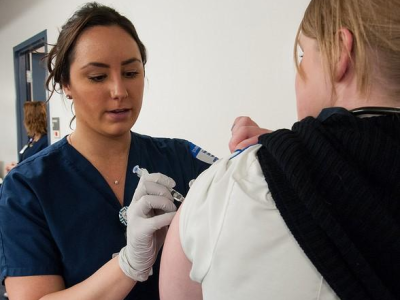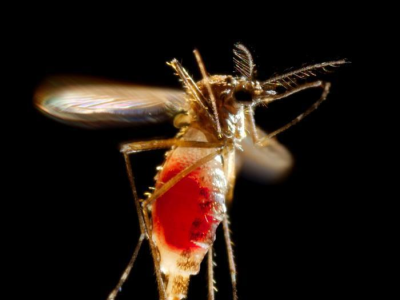Late last week in Morbidity and Mortality Weekly Report, authors from the Centers for Disease Control and Prevention (CDC) provided mid-season vaccine effectiveness (VE) data for the 2024-25 COVID-19 season, and said the current vaccine was 33% effective in preventing COVID-related emergency department (ED) or urgent care (UC) visits in adults, and it was 45% to 46% protective against hospitalization for older adults.
Data were too limited to draw conclusions about VE against critical illness for adults of all ages, the authors note.
Almost 70,000 hospital cases averted last season
The authors estimate that COVID-19 vaccination averted approximately 68,000 hospitalizations during the 2023-24 respiratory season. These vaccines targeted the Omicron JN.1 and JN.1-derived sublineages. The authors say the new findings support the Centers for Disease Control and Prevention's recommendation that everyone 6 months and older should receive a COVID vaccine.
"During 2024, the SARS-CoV-2 Omicron JN.1 and JN.1-derived lineages predominated and were genomically divergent from the XBB lineages on which the 2023–2024 COVID-19 vaccines were based," the authors wrote.
Approved COVID vaccines for 2024-25 were made by Moderna and Pfizer-BioNTech, based on the Omicron KP.2 sublineage, and by Novavax, based on the JN.1.
Almost 50% VE in adults 65 and older
The new VE estimates come from two networks observed from September 2024 through January 2025, with outcomes among adults aged 18 years and older included in the study. The two networks were the Virtual SARS-CoV-2, Influenza, and Other respiratory viruses Network (VISION) and Investigating Respiratory Viruses in the Acutely Ill (IVY) networks. VISION includes 373 EDs/UCs and 241 hospitals in eight states, while IVY includes 26 hospitals in 20 states.
Among adults in the VISION network, 137,543 encounters met criteria for inclusion in the analyses, including 10,459 (8%) case-patients and 127,084 (92%) control patients.
Effectiveness of 2024-25 COVID-19 vaccination against a COVID-19–associated ED/UC visit was 33% (95% confidence interval [CI], 28% to 38%) during the first 7 to 119 days after vaccination, 36% (95% CI, 29% to 42%) during the first 7 to 59 days after vaccination, and 30% (95% CI, 22% to 37%) during the 60 to 119 days after vaccination.
VE was significantly higher for adults age 65 and older in VISION who did not have immunocompromising conditions, at 45% (95% CI, 36% to 53%) at a median interval of 53 days since receipt of the vaccine dose.
In the IVY network, VE against COVID-19–associated hospitalization was 46% for adults over 65 without immunocompromising conditions (95% CI, 26% to 60%), at a median of 60 days after receipt of a 2024-25 COVID-19 vaccine dose.
COVID-19–associated hospitalization rates during the time frame of this analysis were relatively low compared with those during previous years.
"COVID-19–associated hospitalization rates during the time frame of this analysis were relatively low compared with those during previous years, precluding estimation of VE against critical illness (i.e., intensive care unit admission, invasive mechanical ventilation, or death); VE against these outcomes has historically been higher and more sustained than that against less severe outcome," the authors included.



















